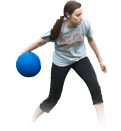
How effective are boot camp style workouts?
How effective are Boot Camp style workouts – Exclusive ACE study investigates the fitness benefits of popular boot camp–style workouts
“There’s a certain element of getting back to the basics and a more functional-training approach,” says ACE’s chief science officer Cedric X. Bryant, Ph.D. “People are looking for different experiences. With boot camps, you’re giving them something outside the traditional club environment.”
Maybe the boot-camp trend is still going strong because it’s not really trendy at all. The workout is simple and not tied to a single piece of equipment. Or maybe it’s the motivating team-oriented atmosphere that’s created as fellow exercisers ‘survive’ the workouts together.
Whatever the reason, boot camp remains wildly popular, yet surprisingly its efficacy has never been formally studied. “Boot camp is becoming more and more popular in the health club setting so obviously people want to know if they’re really going to get something out of it, and if it’s going to be worth their time,” says Kirsten Hendrickson, a graduate student in exercise and sports science at the University of Wisconsin. “So we decided to take a look at it.”
“The biggest benefit is you’re burning an average of 600 calories per hour,” says Porcari. “That’s obviously going to help with weight loss, but you’re also getting the muscle-building benefit from pushups, arm curls and squat thrusts that you wouldn’t get just from going out for a fast walk or jog.”
According to recommendations set by the American College of Sports Medicine (ACSM), to enhance cardiorespiratory endurance individuals need to exercise at 70 percent to 94 percent of HR max and 50 percent to 85 percent of V• O2 max. Based upon the data collected in this study, subjects were exercising well within those recommended intensity levels. “On average, people were working at 77 percent of heart-rate max, which is considered moderate intensity, but it also gets as high as 91 percent, meaning, all these boot-camp workouts have peaks and valleys,” Porcari explains. Figures 1 and 2 offer a visual representation of how heart rate and oxygen consumption varied by the minute as the test subjects followed the video from high-intensity moves like kicking and punching, down to low-intensity moves with the dumbbells, and back up again to high-intensity moves.
“These workouts are designed to be cyclical like that,” he explains. “Boot camp is a good form of interval training because you get periods of high intensity interspersed with moves that tend to be lower in aerobic intensity but they serve a whole different purpose—to build muscle strength.”
But remember, not all boot-camp workouts are created equal, he warns. Some are heavy on cardio, while others emphasize martial arts–inspired movements or basic strength-training exercises. For best results, our researchers recommend picking a well-balanced program with equal helpings of aerobic movements and calisthenics. However, if you’re looking to improve in a particular area, you might consider looking for a boot-camp class or video that caters to your particular fitness weaknesses. For example, if you’d prefer build more upper-body strength and endurance, consider picking one with more push-ups, squat thrusts and similar moves.
“If people are looking for something that’s fun and variable that will increase their adherence to an exercise program, and, most importantly, burn a lot of calories,” says Hendrickson, “boot camp would be a really great option.”




